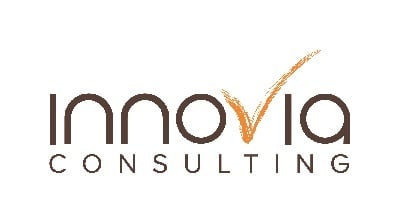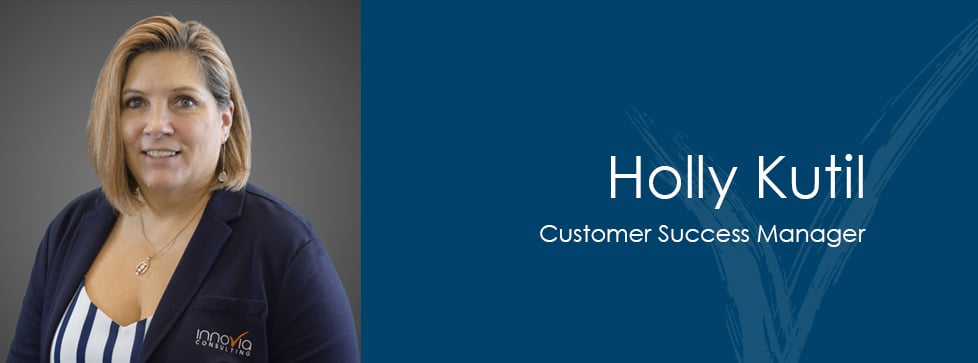In my last blog, I shared how Innovia Consulting got its start when I founded ABC Computers. Today, the story continues!
From Red Wing to SBT
I was now working on my own and needed to find my own clientele. I remember one of my early customers was a service station in Waupaca. At that time, people would not pay upfront for gas. The station would add up all their visits and send a bill at the end of the month. This billing was a time-consuming process, so I told the owner I could automate it for him. I would enter the customers receipts, and billing information for him and charge a monthly rate. Our agreement was that he could then purchase the whole system from me when he wanted. It was a low-barrier way for him to invest in equipment.
As I gained more clients, I found that more of my customers were in manufacturing and wanted to do inventory calculations in addition to billing and accounting. In a way, the customers I had led me to consider what software I would transition to as a next step for the business.
SBT was a system that ran on IBM computers in the late ‘80s. It was designed for manufacturers and included everything needed to take raw materials to finished goods: production orders, bill of materials, inventory, and more. (As a fun aside, my future colleague Tom Doran worked with this same software around this time in Indiana.)
I found myself drawn to selling SBT when, after a local reseller had unfortunately passed, his customers came to me asking for support but wanting to stay on SBT. After taking a closer look, I decided to transition all our customers to SBT.
What We Loved, and What We Didn’t
SBT came with some clear advantages as well as significant drawbacks. On the positive end, we loved that it:
- Supported manufacturers and all the processes they used.
- Met the unique needs of food manufacturers (in later versions) by including support for recipes, batches, specific gravity, and more.
- Was highly customizable.
This last point was the big one for our customers. They had unique business processes, and they wanted a system that would readily slot in. For most of them, this modifiability allowed them to “live with” the drawbacks of the system, which included:
- An unstable database that could break at the transaction level if there was a power disruption.
- A difficult update process—in one particular instance, an update shut down cash receipts for two weeks at a customer.
We found ways to maximize the good while minimizing the bad until a new opportunity arose …
ABC Computers and Navision: A Perfect Match
Later on, a few potential customers turned us down, and I asked them why. In one case, a prospect told me that they loved our company and how we operated, but they were looking at a product called Navision that they were going with instead.
Not long after, another prospect called and asked us to demo our system. Their goal was to take sales information from cash registers and upload it to the general ledger at corporate. We thought SBT could easily meet this objective. After our visit, they called back, and again, they said that they appreciate our passion and what we do, but they saw this software called Navision that seemed like a better fit.
So, I thought, “Let’s figure out what Navision is and if we can start selling it.” I called the company and told them that ABC was an SBT reseller thinking of transitioning to their software, but we have several non-negotiables:
- We need to be able to modify the software, such as by adding unique fields to a customer table.
- We need it to be “dummy-proof.” If someone kicked a power plug, we did not want to have to “fix” a file.
- We want to apply updates without breaking things.
Their response: “Donavan, I think we can do that.” During the demo, the Navision representative put in a sales order on a laptop and hit the post button. At that moment, I yanked the battery out. When we turned it back on, the database rebuilt itself. No file errors. At that point, we were hooked.
Committing to Navision
Now that we were selling Navision, we, of course, wanted to get all our customers to convert to it, but it was a process. Because of the power behind it, the software appealed to a more sophisticated customer base. It was not as simple to install as SBT, and it required a strategy to use well. It took a commitment.
That commitment was felt on our side, too, as a seller. To sell Navision, you had to be certified. You sent at least 5 people to training, and they had to pass tests to prove their mastery. We could not sell it without an 80% pass rating. That process taught me another lesson that has followed me ever since. To be successful in business, you have to own it. You have to buy into it, and you have to jump in with both feet.
Once we moved to Navision, we never looked back, and that focus made all the difference in what came next … But that’s a story for our next blog!
I hope that you’ve enjoyed this series so far and that you plan to join me for part 3. You can also hear the whole story on Steve and Jeff’s excellent The Innovia Conversation podcast, which is available on all podcast platforms or on our website.
See you in the next one!





